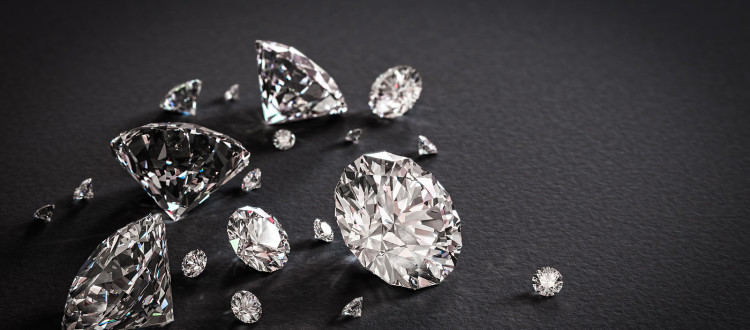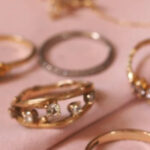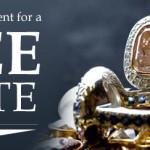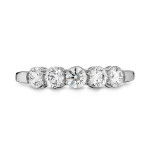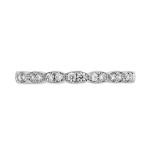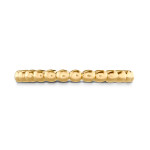How to Choose the Right Diamond?
For most people, especially in New Jersey, understanding the complexity of buying loose diamonds is quite daunting and diamond buying is something that they know marginally at best. Without a proper education, it is far easier to pay more than you need to than it is to get a good deal. Follow the following tips and avoid some costly mistakes, and you or your loved one will be all set!
1) Buy Local – If you are in Monmouth county in New Jersey, you should always come in person to our store at Lincroft Village Jewelers. Coming in person ensures that you will be able to trust your purchase and know what you are getting. Online vendors do not own any of their own Diamonds. They virtually list Diamonds owned by wholesalers across the world. When a customer buys a Diamond from an online vendor, the wholesale owner ships the Diamond to the vendor to be set, or directly to the customer if it was purchased loose (i.e., without a setting). This structure enables online vendors to thrive on a very low profit margin because there is no money invested in their Diamond inventory, and there is no way to really trust their inventory.
2) Go Low in Clarity – First things first – a quick refresher of clarity grades. Clarity is graded along this scale: Flawless, Very Very Slightly Included (VVS) 1st and 2nd degrees, Very Slightly Included (VS) 1st and 2nd degrees, Slightly Included (SI) 1st and 2nd degrees, and Included 1st and 2nd degrees. Most people unfamiliar in the Diamond business see a range of so many different grades, so they figure, “I should at least be somewhere near the middle, or else I’ll wind up with an ugly Diamond!” That would be a huge mistake. It’s a little known secret in the Diamond business that a Diamond with a low clarity grade (SI2, usually) that is still clean to the naked eye (meaning, no imperfections are visible inside the stone without the aid of magnification), will look identical to a flawless Diamond assuming all else is equal. The best part? An SI2 can easily cost a third of what a flawless diamond can cost, everything else being the same.
3) Go Low in Color – Again, a quick refresher. Color is graded from D, completely colorless, all the way down to Z, significant yellow tinting, although most stores only sell diamonds down to J or K color. Again, as with clarity, most people see a range like that and think that they need to at least get something in the middle of the range (here I speak of the range from D-J, not down to Z) to end up with a nice looking gem. Again, though, this logic is flawed. It IS true that a very high color Diamond (say D or E) will look ever so slightly whiter than say an H or an I color Diamond, but that’s only by direct comparison. For most people presented with an H color Diamond (or even lower in a round), they would never claim to see any actual yellow tint in the stone. Most people would only notice that the H isn’t as colorless as could possibly be if it’s placed directly next to a D or E. Even when directly compared, the H doesn’t look yellow – it simply looks like a very slightly warmer shade of white. Again, as with Clarity, the difference in price between a D/E and an H/I can be enormous.
4) Only buy GIA or AGS certified diamonds – By now, many people already know that you should only consider buying a certified Diamond. But what most people don’t realize is that there are many difference certificate options out there. In that great big messy pool of certifying labs, there are really only two that can be trusted to give you an honest grade: GIA (Gemological Institute of America) or AGS (American Gem Society). You might think, “What difference does it make? This Diamond looks great and the price seems good, so what do I care who certifies it?” The answer is simply one of value. EGL USA Gemological Laboratory is the most common low-quality lab that consistently gives significant color and clarity upgrades over GIA. Retailers abuse this fact by comparing their EGL certified Diamond of a specific grade to GIA certified Diamonds of the same grade. Of course, the EGL certified diamond will be sold at a significant discount to the GIA certified stones because in reality, the EGL Diamond is several grades lower. If that same EGL certified Diamond were sent to GIA and sold as a GIA certified stone, it would be sold for less money than it’s currently being sold as the EGL, because its true grade would come back so significantly lower. So it turns out, sticking with GIA or AGS isn’t really an issue of “trust” or “credibility” – it’s an issue of value. If you want to get the best price you can for a given color and clarity – only buy a Diamond certified by one of these two labs.
5) Hit the Carat Sweet Spot – Diamonds are priced per carat. So to arrive at any diamond’s total price, one must multiply its per-carat price by the total number of carats it weighs. As carat weight increases price per carat increases as well, so Diamond prices increase exponentially. But, this price progression is not a smooth curve. Since a Diamond’s value is essentially based on psychology and not a true commodity market, prices reflect these psychological underpinnings. Since a 1.00 carat Diamond is more desirable than a 0.99 carat Diamond, simply because one can then say “I have a 1 ct Diamond,” it is therefore significantly more expensive. Per-carat prices don’t increase smoothly with carat increases, rather per-carat prices are relatively steady until you reach the psychologically significant weight markers (i.e., 0.50, 0.70, 0.90, 1.00, 1.50, 2.00, etc). So if you want to get a great deal, shoot for carat weights that come up just short of these carat weights. This way, you’ll get the lower group’s per-carat price, but still get a stone that looks the same as those of the higher group.

